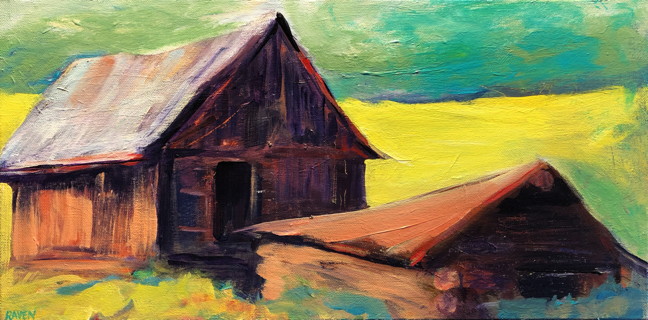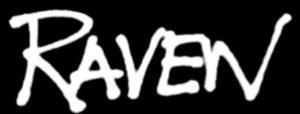| It’s just an old barn next to a busy road. Four tall walls and galvanized metal for a roof. Logs make the structure’s base. Main body finished with milled lumber. It stands empty and watches cars go by. Built as a workhorse, a pioneer during the beginnings of agriculture in Fairbanks. Now it leans and sways and shows daylight where it shouldn’t. But the boards have aged handsomely sporting a fine grain of oranges and browns like an expensive tweed jacket. A well used jacket with patches. o Front door ran off a long time ago leaving a light orange scar to the right of the opening. It must have been a stormy affair with a windy suitor that left it in ruins after making false promises. Barn stands solemnly watching fields still being worked. Glory days remembered when it could show those young whippersnappers a thing or too about farming. Proud metal roof still protects it from snow. Glaring back at fierce winter storms, shakes a defiant silvery fist in triumph. But wait, there is another building very close. A shy little log cabin. It’s easy to overlook because it’s slowly sinking into the soft muck of permafrost. These two were partners before there were new-fangled automobiles whizzing by on the road in front of them. Boards rock back and forth. Wind whistles though their tired rumpled bones telling the same stories over and over in scratchy voices. These two sourdough pioneer buildings sit together and rock away their days. |

20″ x 10″ $600.
sold
painting by Raven
Who Built the Barn and Cabin?
His name was Desjardins. Desjardins means ‘the gardens’ in French. Charles Dejardins was French-Canadian. He spent his savings on a train ride from St. Arsene, Quebec to Alaska with plans to make his fortune in the 1898 gold rush. He almost starved but landed in Fairbanks. The last stop before returning home in defeat.
An idea occurred to him and it grew into a cabin and barn outside of town. He noticed it took months for food to reach Fairbanks. In 1910 steamers and riverboats couldn’t bring fresh greens without spoiling. But Charles Desjardins could grow them. He found his gold in the soil, cultivating it. Fresh green produce.
He chose a fine parcel of land and cleared the trees. Built a tiny log cabin so it would be easy to keep warm. The barn took more time. Started with a log base and finished the structure with milled lumber until it stood stately behind his cabin in triumph.
Charles brought nuggets of wisdom about farming from his home in Quebec. Profits from his first mother lode of fresh produce (plus hay for their horses) set him up for the winter. Lush greens were a precious commodity to his adopted Fairbanks community.
One hundred years later, bare bones of barn and cabin still stand at 2.5 mile Farmers Loop Road in Fairbanks. Boards sag and groan with memories of long, cold, lonely winters followed by intense grueling hard work during summer days.
These building remnants aren’t a sad sight. Not at all. They are a symbol of accomplishment. A flag of encouragement. Symbolic of the Alaskan spirit that endures hardship and succeeds against impossible odds.
Charles found his gold by providing for the people in his community.
